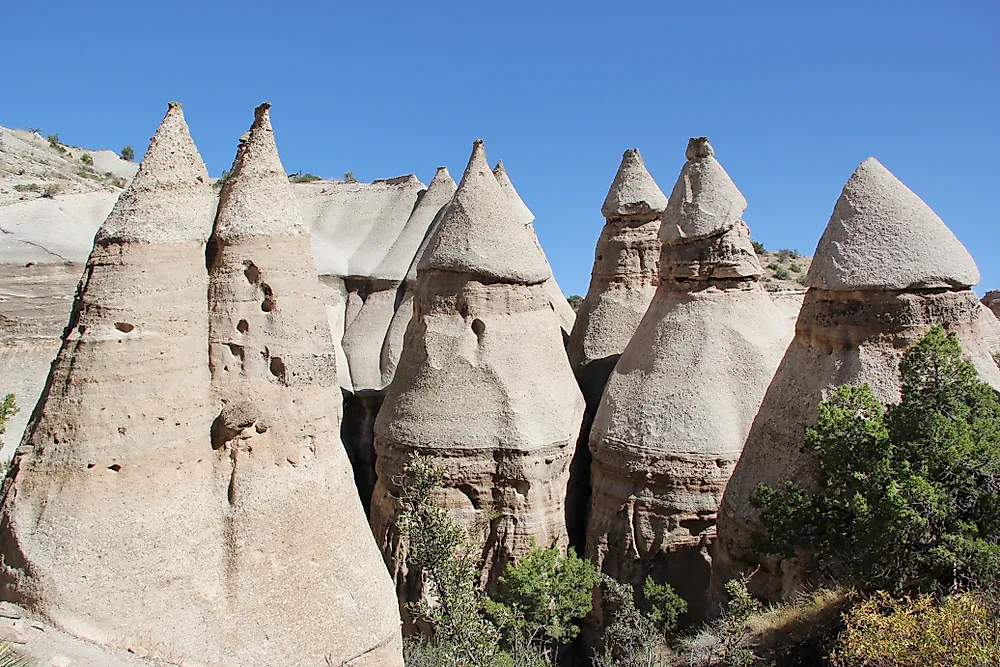Kasha Katuwe Tent Rocks National Monument - Unique Places in North America

The Kasha Katuwe Tent Rocks National Monument is situated in Sandoval County in the state of New Mexico. The monument was created as a US National Monument on January 17, 2001, by Bill Clinton. Kasha Katuwe translate to white hills in Keresan language. The site is managed by the Bureau of Land Management (BLM) under the US department of the interior.
Description
The monument encompasses an area of 8.44 square miles with elevations reaching about 5,570 feet to 6,760 feet and is located on the Pajarito Plateau. Volcanic eruptions that took place millions of years ago left tuff, pumice, and ash deposits that resulted in the formation of the cone-shaped tent rocks. The tent rocks have boulder caps, which shield the tuff and the pumice below. The tents which have had their boulder caps lost over time have started to disintegrate. The rock tents have similar shapes but have different heights which range from some few feet tall about 90 feet. Along the cliff's face, one would find beige and pink colored rock, mixed with bands of gray, which resulted from the uniform layering of volcanic material. Wind and water cut into the volcanic deposits over time to create dry creeks and canyons.
Uniqueness
The National Monument is unique in that it offers an outdoor laboratory for visitors to observe and study geologic processes that shape natural landscapes. The beige and pink cone-shaped rock tents, made from volcanic deposits are what stand out in the monument. The tribal governor of the Cochiti Pueblo holds jurisdiction over the area occupied by the monument.
Tourism
The monument is open to visitors during the day. The site can only be accessed by foot, through two sections. The relatively easy cave loop trail cover a distance of 1.2 miles and the Canyon trail rated as the most difficult and is 1.5 miles long. The Canyon trail includes a steep one-way trail that passes through narrow canyon which that ends at Mesa top, which has a great view of Sangre de Cristo, Jemez, Rio Grande Valley, and the Sandia Mountains. Some of the activities to do include; plant identification and bird watching.
Habitat
The site is home to several plant species which include the evergreen Manzanita shrub, the Indian paintbrush, rabbitbrush, desert marigold, and the Apache plume. Birds can be seen according to the season, and some of the birds that can be found at the monument include ruby-crowned kinglets, American kestrels, red-tailed hawks, violet-green swallows, house finches, hepatic tanagers, and occasionally the golden eagle. The woodlands are home to the elk, mule deer, wild turkey, coyotes, ground squirrels, rabbits, and chipmunks.
Threats
Excavation and collection of obsidian rocks from the monument is prohibited as it would present a grave danger to the natural environment. Open fires and the cutting of trees pose a threat to the naturally occurring forests within the boundaries of the monument. Glass water bottles are also prohibited in the monument.











